Modern design, minimalist design, or organic design: these decorative vocabulary terms may seem vague, but they reveal distinct philosophies. Organic design, an artistic movement born in the 1950s, revolutionizes our relationship with space by placing harmony between humans and nature at the heart of its creative approach.
What is Organic Design? Complete Definition
Organic design (or organic architecture) focuses on the harmonious interaction between humans, nature, and objects, whether furniture or architecture. This revolutionary approach advocates fluid forms inspired by living things and prioritizes natural materials.
This design philosophy fundamentally opposes the geometric rationalism of the Bauhaus movement, favoring intuition and emotion over pure logic. It draws its sources from meticulous observation of natural forms: the spiral of a shell, the curves of a leaf, water undulations, geological strata.
Key Characteristics of Organic Design
- Curved and sinuous forms inspired by nature, systematically avoiding right angles
- Preferred natural materials: solid wood, raw stone, plant fibers, artisanal ceramics
- Environmental harmony: respectful integration of landscape and local climate
- Intuitive functionalism: natural adaptation to human needs and daily gestures
- Absence of standardization: each creation is unique, adapted to its specific context
- Spatial continuity: fluidity between interior and exterior spaces
Charles Jencks, in his reference work “Modern Movements in Architecture” (1973), distinguishes six major architectural traditions: logical, idealistic, conscious, intuitive, militant, and extremist. He positions organic architecture, which emerged in the early 1950s, within the intuitive current, thus opposing the strict rationalism of Bauhaus.
History of Organic Design: From Origins to Today
From a technical standpoint, the history of organic design is inseparable from that of architecture of the same name. The organic architect represents the other side of modern architecture: where the rationalist current (represented by UAM and Bauhaus) privileges pure geometry, the organic current adopts a more intuitive approach, based on life, exchange, and feeling.
Key Milestones
Movement Origins: Art Nouveau (1890-1910)
Art Nouveau influences the first reflections on integrating natural forms into decorative art. Architects like Victor Horta in Belgium and Hector Guimard in France already explore vegetal curves and natural materials. This period establishes the aesthetic foundations of the future organic movement.
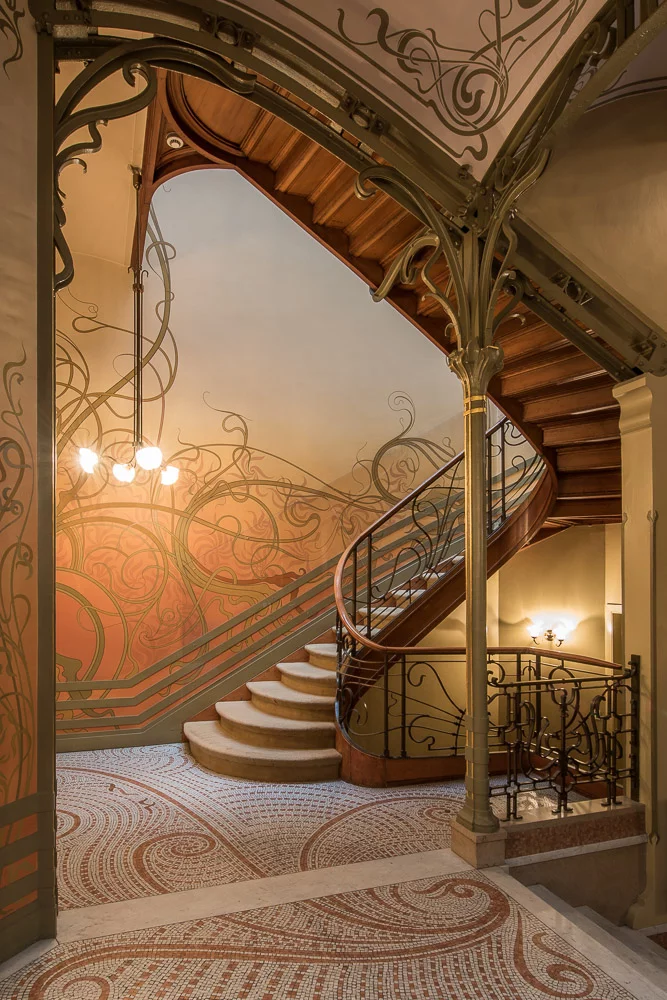
Key innovation: Systematic introduction of vegetal motifs in architecture and furniture, breaking with classical academicism.
Falling Water: The Wright Revelation (1935-1939)
Frank Lloyd Wright materializes his vision with this iconic house integrated into a natural waterfall. This achievement marks the official emergence of organic design as a mature architectural movement, demonstrating that it’s possible to build with nature rather than against it.
Revolutionary impact: First concrete demonstration of total architecture-landscape integration, influencing an entire generation of architects.
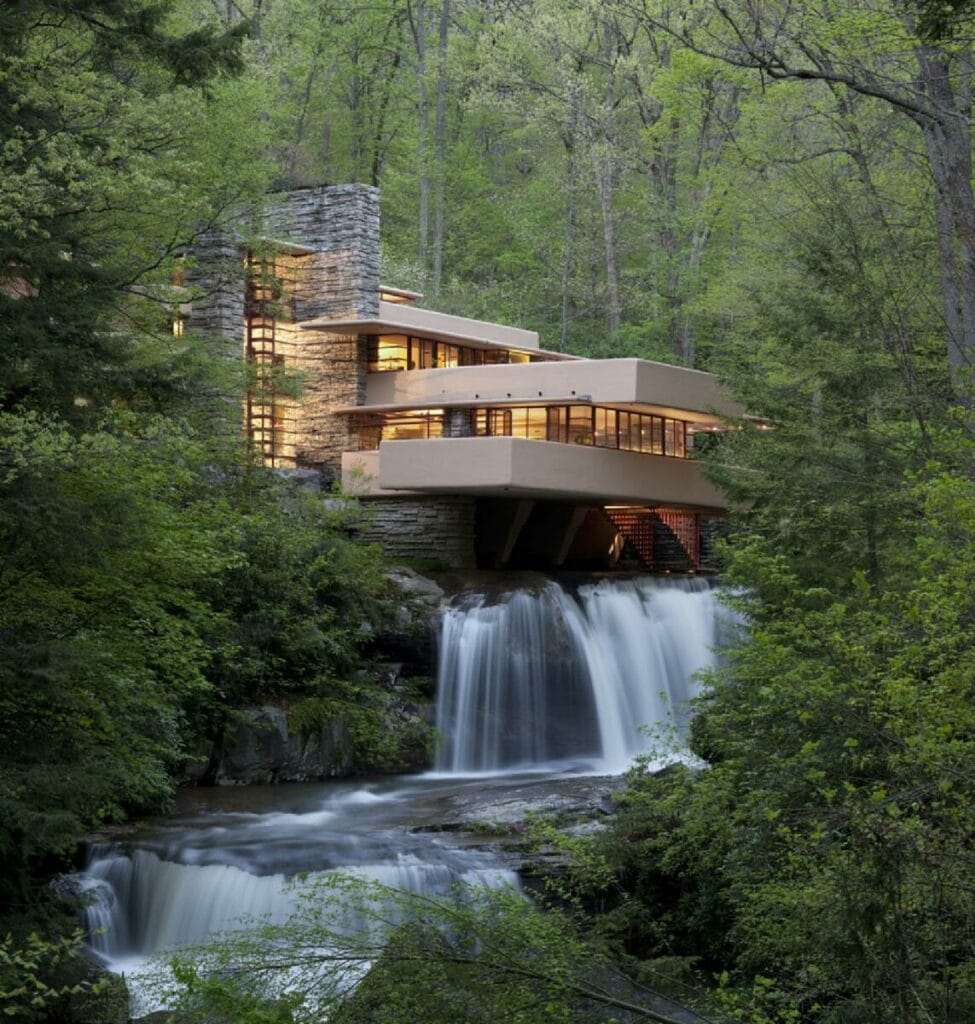
Scandinavian Golden Age (1945-1970)
Alvar Aalto in Finland and Arne Jacobsen in Denmark develop Nordic organic functionalism. This period sees the birth of revolutionary wood bending techniques, enabling the creation of industrializable organic forms. The Scandinavian approach democratizes organic design by making it accessible to the masses.
Technical revolutions: Development of molded plywood, steam bending techniques, natural finishes preserving wood’s tactile qualities.
American Democratization (1950-1980)
Organic design extends to mass-produced furniture through innovations by the Eames couple and Eero Saarinen. This period marks the industrialization of organic forms and their massive diffusion, permanently influencing contemporary interior decoration.
Industrial breakthrough: Mastery of composite materials, molded fiberglass, mass production of complex forms.
Contemporary Renaissance (1990-today)
The movement reinvents itself with ecological concerns and sustainable design. The emergence of new bio-sourced materials and digital manufacturing technologies allows exploration of unprecedented organic forms while respecting the environment.
New horizons: Biomimicry, 3D printing, recycled materials, artificial intelligence applied to generative design.
So I stand before you preaching organic architecture: declaring organic architecture should be the modern ideal and its teaching so necessary if we would see life whole, and now at last serve life in its entirety, holding no traditions essential to the great TRADITION.
The Founding Masters of Organic Design
Frank Lloyd Wright (1867-1959)
The Visionary Pioneer
Frank Lloyd Wright remains the emblematic figure of organic design. This American architect revolutionized spatial approach by advocating total integration of habitat into its natural environment. His “Prairie School” philosophy still influences contemporary architecture today.
Masterpiece: Falling Water (1935-1939), true architectural manifesto where nature becomes an integral part of habitation.
Revolutionary innovations: Concept of “fluid spaces” without rigid partitions, integration of vegetation into architecture, revolutionary use of reinforced concrete in cantilevers, creation of furniture integrated with architecture.
Alvar Aalto (1898-1976)
Scandinavian Elegance
Alvar Aalto, Finnish architect and designer, embodies the excellence of European organic functionalism. Master of woodworking, he develops innovative techniques for bending plywood, creating unprecedented fluid forms.
Signature innovation: Wood bending techniques that would permanently influence Scandinavian furniture.
Major contributions: Development of industrial molded plywood, creation of Artek brand (1935) to distribute his creations, integration of natural lighting in architecture, total harmonization of architecture-furniture-objects.
Arne Jacobsen (1902-1971)
The Danish Perfectionist
Arne Jacobsen belongs to the Scandinavian functionalist current and establishes the lasting foundations of organic design. Total architect and designer, he conceives complete environments, from building to cutlery.
Icon: The “Drop Chair” (1958), perfect synthesis between organicity and industrial functionality.

Revolutionary approach: Concept of “total design”: from architecture to door handles, perfect mastery of modern industrial materials, creation of organic forms reproducible in series, major influence on contemporary Danish design.
Charles and Ray Eames (1907-1978 / 1912-1988)
The Revolutionary Duo
Charles and Ray Eames revolutionize post-war furniture by combining technical innovation and organic forms. Their scientific approach to design creates iconic pieces still produced today.
Masterpiece: “La Chaise” (1948), created with Eero Saarinen, remains the perfect embodiment of American organic design.

La Chaise, 1948 – designed by Charles & Ray Eames with Eero Saarinen. Combines sculptural form and seating, an early American organic chair.
Technological revolutions: Mastery of composite materials (fiberglass, resins), revolutionary 3D molding techniques, multidisciplinary approach: architecture, furniture, photography, high aesthetic quality industrial production.
The form of this chair does not purport to anticipate clearly the variety of needs to be fulfilled. These needs are for the present undefined and the solution of the form is in a large proportion intuitive.
Evolution and Contemporary Trends in Organic Design
Contemporary Heirs
Many designers still privilege the intuitive aspect in their creations. Ron Arad, British designer, ranks among the most illustrious heirs of 1950s organic design. His sculpture-seats explore the boundaries between art and functionality.
Zaha Hadid (1950-2016)
Pioneer of parametric architecture, Zaha Hadid pushes the limits of organic design through digital technologies. Her revolutionary biomimetic forms transform our perception of architectural space.
Innovations: Use of advanced 3D design software, high-performance composite materials, self-supporting structures with complex geometries.
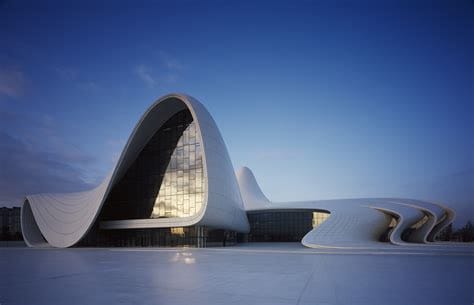
Marc Newson
Marc Newson elevates industrial design to sculptural art. His sensual curves and innovative materials create objects that are both functional and emotionally powerful.
Signature: Perfect mastery of aluminum, ultra-smooth organic forms, obsessive attention to finish details.
Patricia Urquiola
Patricia Urquiola explores the infinite possibilities of technical textiles in organic furniture. Her creations marry artisanal tradition and technological innovation.
Specialty: 3D technical weaving, inflatable forms, high-performance recycled materials, nature-inspired colors.
Ronan and Erwan Bouroullec
The Bouroullec brothers embody the excellence of contemporary French design. Their organic minimalism sublimes simplicity without ever falling into austerity.
Philosophy: “Complex simplicity,” search for the essential, harmonious integration in contemporary habitat.
Scandinavian Design: A Living Heritage
Scandinavian design – which can be qualified as Nordic organic design – has enjoyed uninterrupted success since the 1950s. This approach privileges:
Democratic functionality
Beautiful design accessible to all, refusal of aesthetic elitism, durable quality rather than ostentatious luxury.
Local natural materials
Nordic light woods (birch, pine, spruce), natural wools, untreated leathers, respect for local resources.
Sophisticated simplicity
Refinement without austerity, careful details, perfect finishes, timeless aesthetics.
Nordic climate adaptation
Search for warmth and luminosity, natural light optimization, creation of cocooning ambiances.
Sustainable and Eco-responsible Design
Sustainable architecture and eco-responsible design constitute the logical evolution of organic design. This new generation integrates contemporary environmental concerns:
- Bio-sourced materials: fast-growing bamboo, recyclable cork, hemp fibers, transformed algae, mushroom mycelium
- Circular economy: creative upcycling, design for repair, evolutionary modularity, planned end-of-life
- Local production: short circuits, valorization of regional know-how, carbon footprint reduction
- Emotional durability: objects designed to transcend time, creation of lasting attachment, aesthetic timelessness
How to Integrate Organic Design in Your Interior
Furniture and Decorative Objects
To adopt organic style at home, favor pieces that tell a story and create an emotional connection:
Tables with irregular tops
Favor raw wood with its natural imperfections, transparent poured resins integrating vegetal elements, natural stone tops with apparent veins, or artisanal ceramic creations with free forms.
Expert advice: Seek unique pieces from local artisans, each imperfection becomes an aesthetic signature.
Enveloping seating
Opt for cocoon armchairs in woven rattan, organic poufs in felted wool, chairs molded in natural fibers, or seating sculpted from solid wood.
Contemporary innovation: New bio-sourced composite materials allow unprecedented organic forms while respecting the environment.
Sculptural lighting
Choose hand-woven natural fiber suspensions, driftwood lamps, Japanese paper creations, or ceramic luminaires with natural glazes.
Current trend: Biomimetic lighting inspired by vegetal forms creates poetic shadow and light plays.
Artisanal objects
Collect free-form ceramics, raw wood sculptures, natural fiber wall weavings, blown glass creations with organic bubbles.
Added value: Each artisanal piece brings a unique soul to your interior, creating a lasting emotional bond.
Materials and Textures
Natural materials constitute the very essence of organic design. Their choice directly influences the ambiance and character of your space:
Authentic solid wood
Recommended species: Oak for its nobility and durability, walnut for its chocolate veins, ash for its flexibility, olive for its Mediterranean character.
Natural finishes: Favor vegetable oils that preserve wood’s natural touch and reveal its intrinsic beauty.
Raw natural stone
Expressive varieties: Travertine with natural alveoli, slate with metallic reflections, granite with scintillating crystals, limestone with apparent fossils.
Creative applications: Worktops, wall coverings, sculpted basins, decorative elements.
Organic textiles
Natural fibers: Linen for summer freshness, hemp for resistance, untreated wool for softness, organic cotton for versatility.
New alternatives: Nettle fibers, lotus silk, algae textiles, respectful bio-sourced innovations.
Artisanal ceramics
Traditional techniques: High-temperature stoneware for resistance, earthenware for bright colors, porcelain for fineness, raku for authenticity.
Natural glazes: Vegetal ashes, metallic oxides, local colored earths create unique and unpredictable effects.
Nature-Inspired Color Palette
Fundamental earthy tones
Warm nuances: Red ochre from Provençal cliffs, burnt sienna from Tuscan lands, natural umber from autumn undergrowth.
Color psychology: These tints anchor the space and create a feeling of security, recalling our primordial connection to earth.
Vivifying vegetal greens
Botanical range: Sage for appeasement, olive for sophistication, moss for freshness, eucalyptus for vitality.
Beneficial effects: Green promotes concentration and reduces stress, creating an environment conducive to well-being.
Luminous nuanced beiges
Chromatic subtleties: Ecru linen for softness, golden sand for warmth, rosy off-white for tenderness, broken white for purity.
Decorative universality: These neutrals harmonize perfectly with all natural materials and create a timeless base.
Mysterious deep blues
Aquatic inspirations: Indigo of starry nights, petroleum of deep oceans, night blue of dusk, celadon of crystalline waters.
Spiritual dimension: These blues bring depth and contemplation, evoking natural infinity.
Vivifying vegetal greens
Botanical range: Sage for appeasement, olive for sophistication, moss for freshness, eucalyptus for vitality.
Beneficial effects: Green promotes concentration and reduces stress, creating an environment conducive to well-being.
Luminous nuanced beiges
Chromatic subtleties: Ecru linen for softness, golden sand for warmth, rosy off-white for tenderness, broken white for purity.
Decorative universality: These neutrals harmonize perfectly with all natural materials and create a timeless base.
Mysterious deep blues
Aquatic inspirations: Indigo of starry nights, petroleum of deep oceans, night blue of dusk, celadon of crystalline waters.
Spiritual dimension: These blues bring depth and contemplation, evoking natural infinity.
Organic Design vs Other Styles: Understanding the Differences
Detailed Comparative Analysis
| Analysis Criteria | Organic Design | Minimalist Design | Industrial Design | Contemporary Design |
|---|---|---|---|---|
| Basic philosophy | Harmony with nature, respect for living things, emotional connection to materials | Search for the essential, maximal refinement, “less is more” | Celebration of industrial function, machine aesthetics | Following current trends, assumed eclecticism |
| Forms and geometry | Natural curves, assumed irregularities, biomimetic forms | Refined lines, perfect geometry, privileged right angles | Sharp angles, apparent structures, industrial geometry | Form mixity according to current trends |
| Privileged materials | Solid wood, natural stone, plant fibers, artisanal ceramics | Neutral materials, smooth surfaces, perfect finishes | Raw metal, waxed concrete, recycled industrial materials | Varied materials according to fashions and innovations |
| Chromatic palette | Natural colors, earthy tones, vegetal nuances | Whites, grays, blacks, refined monochrome palette | Metallic grays, deep blacks, industrial color accents | Trendy colors changing according to seasons |
Sought ambiance: Natural warmth, living organicity, connection to living things vs Contemplative serenity, zen refinement, spiritual purity vs Assumed urbanity, affirmed character, raw modernity vs Varied ambiances according to current influences
Relationship to time: Natural timelessness, valued patina, accepted evolution vs Frozen perfection, rigorous maintenance, preserved purity vs Valued industrial patina, assumed wear traces vs Assumed ephemeral, regular renewal
Contemporary Hybridizations
Contemporary design tends toward creative hybridizations, mixing codes from different styles:
- Organic minimalism: Refinement of organic forms, sophisticated simplicity
- Natural industrial: Metal structures dressed with natural materials
- Bio contemporary: Organic forms with high-tech bio-sourced materials
- Neo-rustic: Modern reinterpretation of traditional rural codes
Emblematic Realizations of Organic Design
Legendary Architectures
Falling Water – Frank Lloyd Wright (1935)
This revolutionary residence in Bear Run, Pennsylvania, perfectly illustrates architecture-nature integration. The house seems to literally “grow” from the rock, its cantilever terraces following the waterfall’s rhythm.
Technical innovations: Reinforced concrete cantilevers, continuous corner windows, integration of natural rocks in living spaces.
Villa Mairea – Alvar Aalto (1938)
Located in Finland, this villa demonstrates Aalto’s mastery of landscape integration. Every detail, from door handles to luminaires, participates in a global harmony respectful of the forest environment.
Particularities: Exclusive use of local species, vegetalized roof, organic volumes following natural topography.
Heydar Aliyev Center – Zaha Hadid (2012)
In Baku, this revolutionary cultural center illustrates the contemporary evolution of organic design. Its continuous undulating surface abolishes the traditional boundary between ground, wall, and roof.
Technical prowess: Complex structure in fiber concrete, composite panel cladding, computer-assisted parametric geometry.
Bosco Verticale – Stefano Boeri (2014)
These Milan residential towers literally integrate vegetation into urban architecture. More than 900 trees and 20,000 plants create a unique vertical ecosystem.
Ecological innovation: Artificial microclimate, oxygen production, CO2 absorption, habitat for urban biodiversity.
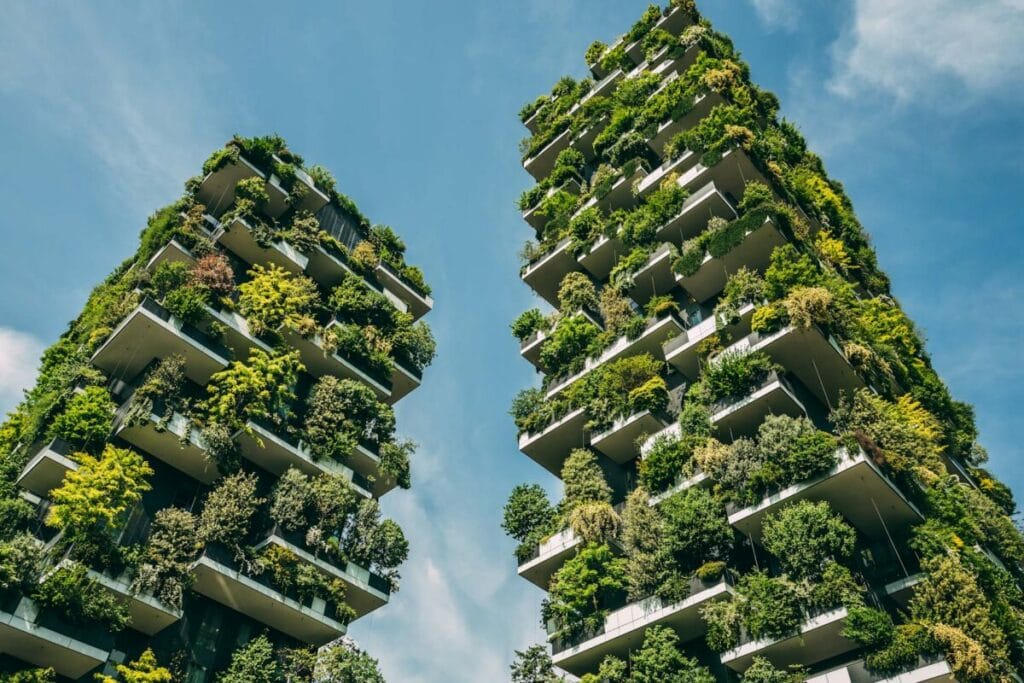
Iconic Furniture
Panton Chair – Verner Panton (1960)
First chair molded in one piece, this revolutionary plastic creation embodies industrial organicity. Its serpentine form evokes fluid movement frozen in matter.
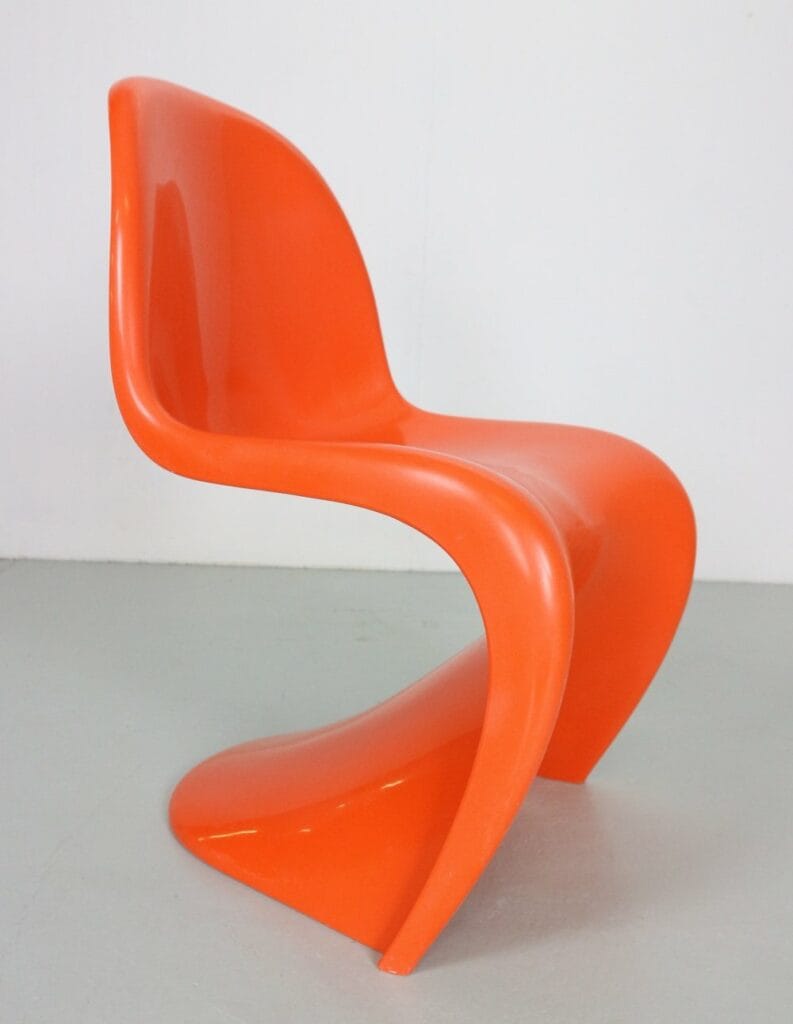
Womb Chair – Eero Saarinen (1946)
Designed for Knoll, this “womb” armchair offers a protective cocoon with enveloping forms. Its fiberglass shell revolutionizes organic furniture production techniques.
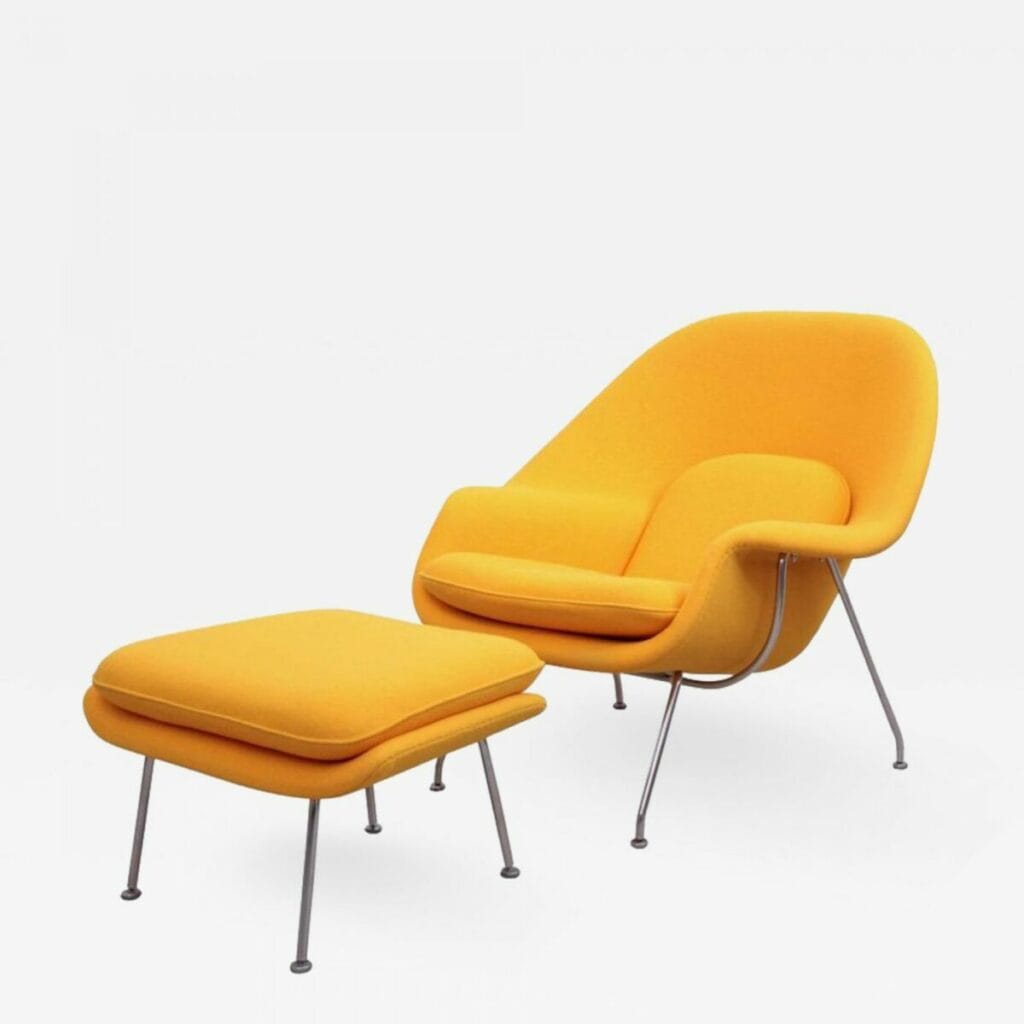
Mezzadro Stool – Achille Castiglioni (1957)
This stool poetically diverts an agricultural tractor seat, embodying the organic spirit through its reference to the rural world and its intuitive functionality.
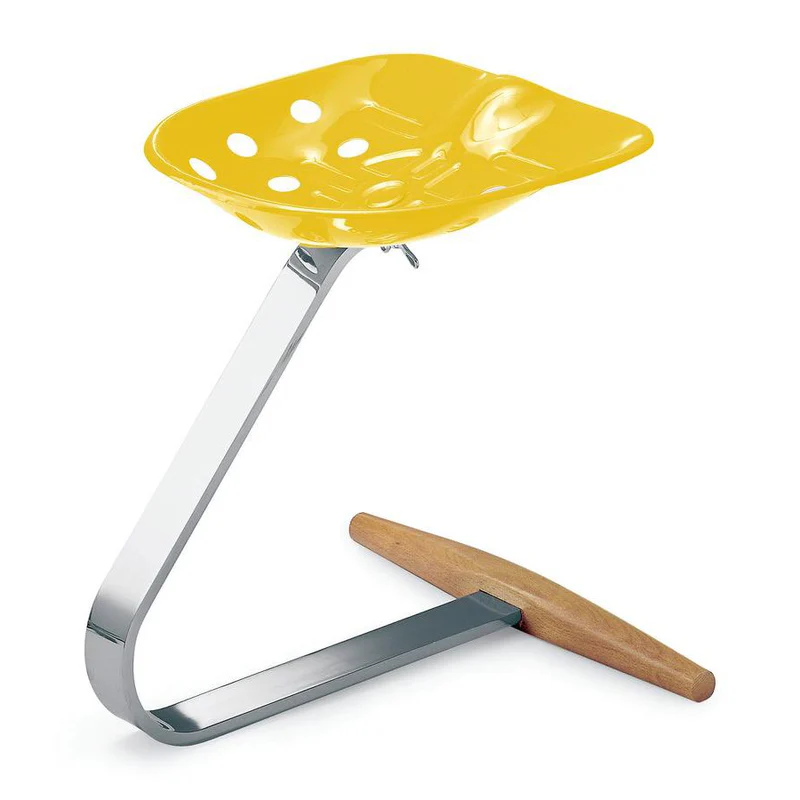
La Chaise – Charles and Ray Eames (1948)
Created with Eero Saarinen, this masterpiece remains the perfect embodiment of American organic design, combining sculptural beauty with innovative manufacturing techniques.

The Future of Organic Design
Emerging Trends
Advanced biomimicry
In-depth study of natural structures inspires revolutionary innovations: self-cleaning surfaces inspired by lotus leaves, ultra-light structures mimicking bird bones, ventilation systems copied from termite mounds.
Revolutionary materials
Development of cultivated biomaterials: mushroom leather, algae plastics, self-healing concrete, transparent wood, living ceramics capable of growth and adaptation.
Creative artificial intelligence
Generative algorithms explore unprecedented organic forms, simultaneously optimizing aesthetics, functionality, and environmental impact. AI becomes the designer’s creative collaborator.
Regenerative design
Beyond sustainability, future organic design aims for positive regeneration: objects that improve their environment, architectures that produce more energy than they consume.
Organic design represents much more than a simple decorative trend: it’s a life philosophy that reconciles humans with their natural environment. By privileging fluid forms, authentic materials, and harmony with nature, this approach offers a sustainable alternative to contemporary consumerism excesses.
From pioneers like Frank Lloyd Wright to contemporary creators using artificial intelligence, organic design continues to evolve while preserving its fundamental values: respect for nature, intuitive functionality, and accessible beauty. In a world seeking meaning and sustainability, this design philosophy finds particular resonance and promises to continue inspiring tomorrow’s creators.
The future of organic design takes shape at the intersection of artisanal tradition and technological innovation, where ancestral wisdom of material work meets infinite possibilities offered by new digital tools. This promising synthesis opens unprecedented creative horizons while preserving the very essence of this approach: creating objects and spaces that honor life in all its forms.
Global Impact and Cultural Influence
Today, organic design transcends cultural boundaries and influences various fields:
- Urban planning: Biophilic cities integrating nature into urban fabric
- Product design: Everyday objects inspired by natural forms and processes
- Digital interfaces: User experiences mimicking natural interactions
- Textile design: Bio-fabricated textiles and organic silhouettes
- Automotive design: Vehicles with aerodynamic forms inspired by marine life
Sustainability and Social Responsibility
The organic design movement embraces increasingly broader responsibilities:
Climate action
Carbon-negative materials, energy-positive buildings, climate-adaptive designs
Social equity
Accessible natural design, inclusive spaces, community-centered approaches
Cultural preservation
Traditional craft techniques, indigenous material wisdom, local design languages
Biodiversity protection
Habitat-integrated architecture, species-supporting design, ecological corridors
Facing unprecedented environmental challenges, organic design offers not only aesthetic solutions, but a fundamental reimagining of our relationship with the natural world. It suggests that the future of design lies not in dominating nature, but in learning from it, working with it, and ultimately, becoming one with it. This philosophy points toward a more harmonious, sustainable, and beautiful future for all.
Resources
Design Fundamentals
Hart Design Glossary from A to Z
Sabre legs, patina, passementerie, caning… This lexicon gives meaning to the technical and stylistic terms often used in the design world.
Access the Hart Design GlossaryHart Glossary of Design Icons
This glossary lists all the great names in design and decoration in alphabetical order. Discover the creators who have shaped contemporary living art.
Access the Hart Glossary of Design Icons
Digital entrepreneur and craft artisan, I use my unconventional background to share my vision of luxury design and interior decoration — one enriched by craftsmanship, history, and contemporary creation. Since 2012, I have been working daily in my workshop on the shores of Lake Annecy, creating bespoke interiors for discerning decorators and private clients.
